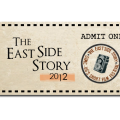Of Short Stories and Women
The short story format is dangerous.
You could compare it to the steep short stretch before reaching a mountain’s peak. For a writer, there is a limited distance you can travel with a given number of words. You must make full use of your resources–the grip of the plot, the promise of the end, the foundation of the character and the importance of the gaps in between. Combine this with the portrayal of feminism and you have a potent mix.
Literature is no stranger to works of fiction with strong female protagonists with many a novel being catalysts of change. But could the same vigour exist when the author has a mandate–thousand words or less? The answer–a resounding ‘yes’.
Take The Yellow Wallpaper, a haunting short story by Charlotte Perkins first published in 1892. The story written in first person revolves around a woman who is taken to a country house to recover from her assumed frailties. On her husband’s orders she is confined to a room with a yellow wallpaper. The story progresses to first show her discontent on prohibitions to her writing due to her ‘condition’, to end with a surprising deterioration of her sanity. This story brought insights into the “domestic sphere” of women and many took the story’s ending, of her crawling over her husband’s fainted body, as a triumph of the protagonist’s victory over dominance.
Another stark story revolving around a mother’s dialogue to her daughter, Girl by Jamaica Kincaid, combines themes of female subjugation as seen through the advice handed down a generation. The story spends no time in introductions and from the very first line you can sense the tone of advice given from a mother who has perhaps lived through these clichés herself.
This is how you smile… this is how you iron your father’s khaki shirt… on Sundays try to walk like a lady and not like the slut you are so bent on becoming.
Closer to home, a hurricane of a woman, Ismat Chughtai born in Uttar Pradesh in 1915, penned controversial and strong female characters. Out of her many legendary stories is one called Housewife about a brazen maid called Lajo. The story showcases Lajo’s sexuality and mocks societal norms on marriage, the ‘right woman’ and virgins. It also was a coming-of-age story about a woman’s own priorities, in this case of having a place to call home and independence from bad marriages, over the said role of a coy wife.
A collection I never tire of is Jhumpa Lahiri’s Interpreter of Maladies. In A Temporary Matter, my favourite of her work, the author seduces us with such ease into the dynamics between Shoba and Shukumar while challenging the conventional gender roles in marriages.
But perhaps some of the most stunning and modern female portrayals in short stories have been written by men. Woven in the familiarity of real issues and modern plots, these stories have not just been about a female protagonist out to live life on her own terms. Nor have they been about crusades or injustice. They have been simple, effective stories that provide insights into a world we never knew existed.
Take Saadat Hasan Manto’s masterpiece A Woman’s Life. The story set in the humble abode of a prostitute Saugandhi begins with vivid descriptions of her bare room, her dog and the silver coins she just earned hidden away in her bra. The plot is unpretentious – a pimp with advice on life’s realities, an inspector boyfriend who pretends to love her, admonishes her work and yet takes her money and the drudgery of her life. And yet the story is also a peek into a prostitute’s kind hearted soul, of goodness and strength that prevail inside a woman despite atrocities and of her ability to make the right choices – sometimes even preferring the company of a dog to a man!
Another writer who used what would have been normally considered a female villain into a story of female quest, independence and intrigue is the author of the short story-turned-novella-turned-screenplay-turned-movie that we have now come to know as Susanna’s Seven Husbands. While the original short story does not have the same reveal at the end as the movie – the elements of the character are cohesive. Here was a woman in no doubt of her charm, her beauty. A woman who used her intelligence, wealth and power to pursue a life traditionally only within the realms of men. What is most interesting is that through a modern portrayal, Ruskin Bond has the reader rooting for Susanna.
While novels give us the space to explore the layers of feminism and provide closure, point of view; I crave the short story format. Mostly because long after the story’s read, the character stays alive inside me.
________________________________________________________________
Featured image illustration by Priyadarshini Sivakumar





















